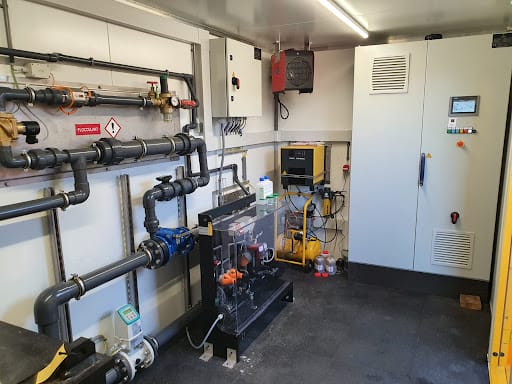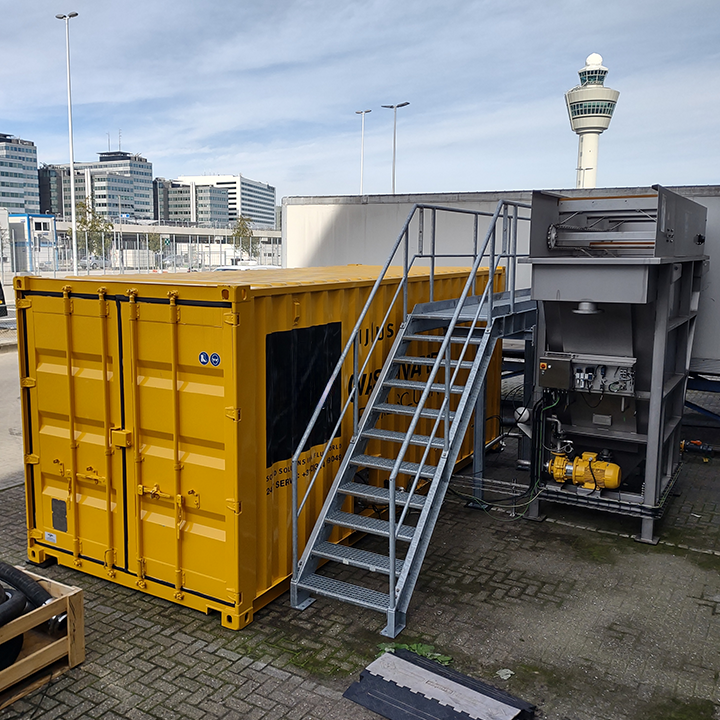Schlammentwässerung
SchlammentwässerungNSP-Anlage

Die Kosten für die Schlammentsorgung machen einen erheblichen Teil der Betriebskosten von Abwasserbehandlungssystemen aus. Durch den Einsatz von Entwässerungstechniken können diese Kosten deutlich gesenkt werden, da der entwässerte Schlamm leichter in eine Biogasanlage integriert werden kann, was zu einer höheren Produktion von Biogas führt.
Das NSP-Verfahren zur Schlammentwässerung erzeugt auf effiziente Art und Weise einen hochkonzentrierten entwässerten Kuchen und sauberes Zentratwasser. Dies führt zu einer erhebliche Verringerung des Schlammvolumens und damit zu wesentlichen Kosteneinsparungen bei der Entsorgung. Die NSP-Einheit besteht aus vormontierten Komponenten, wodurch sie flexibel und einfach zu installieren ist. Sie kann nahtlos in größere Abwasserbehandlungsprojekte integriert oder unabhängig in neuen oder bestehenden Anlagen eingesetzt werden.
Entdecken Sie die Vorteile von mobiler Abwasserbehandlung für Ihre Anlage
Kontakt
Aplicaciones típicas
Physikalisch-chemische Schlämme und biologische Schlämme
Verringerung des Schlammvolumens bei einem typischen Feststoffgehalt von 20 %. Feststoffabscheidung von über 95 %, wodurch die Kosten für die Filteraufbereitung gesenkt werden.
Neue oder bestehende Abwasserbehandlungsanlagen
Bietet eine sofortige Lösung für neue und bestehende Abwasserbehandlungsanlagen. Sie sorgen für ein effektives Schlamm-Management, reduzieren Betriebsunterbrechungen und bieten einen praktischen Ansatz für wechselnde Schlammmengen und Situationen.










